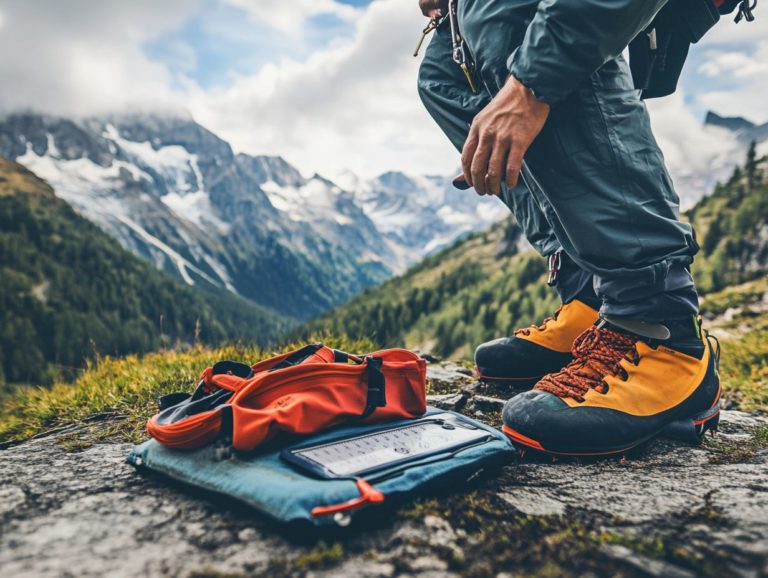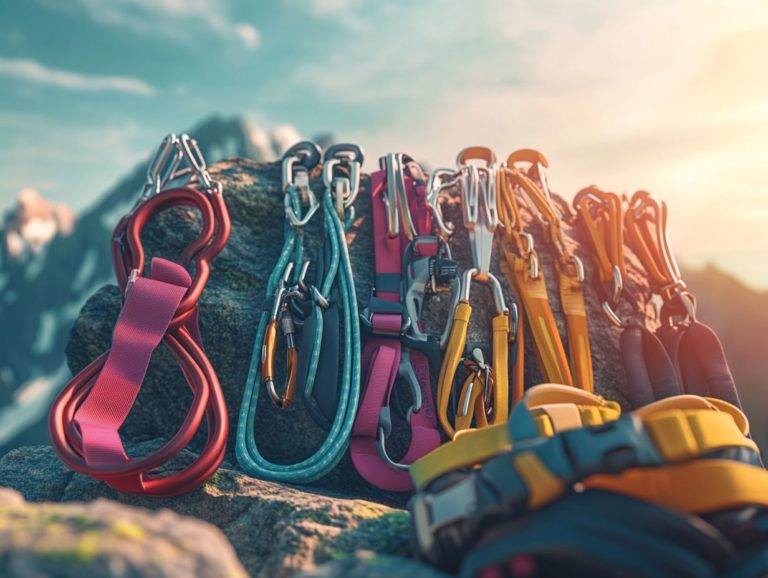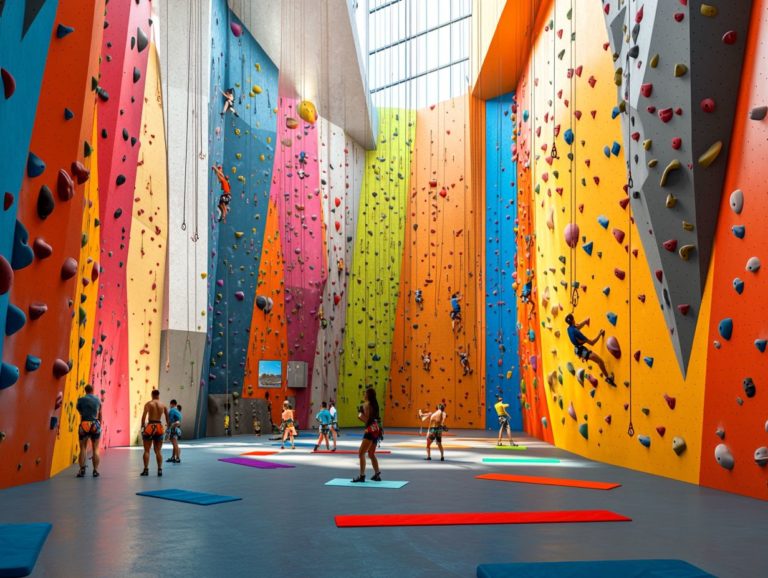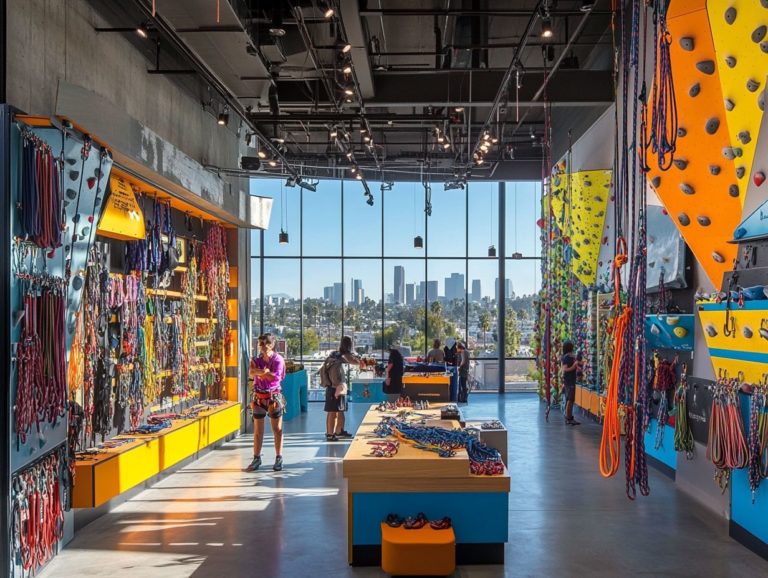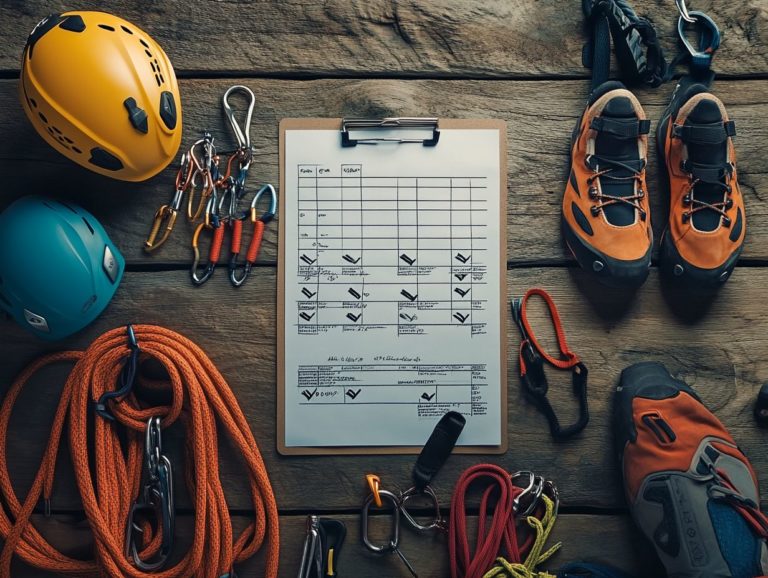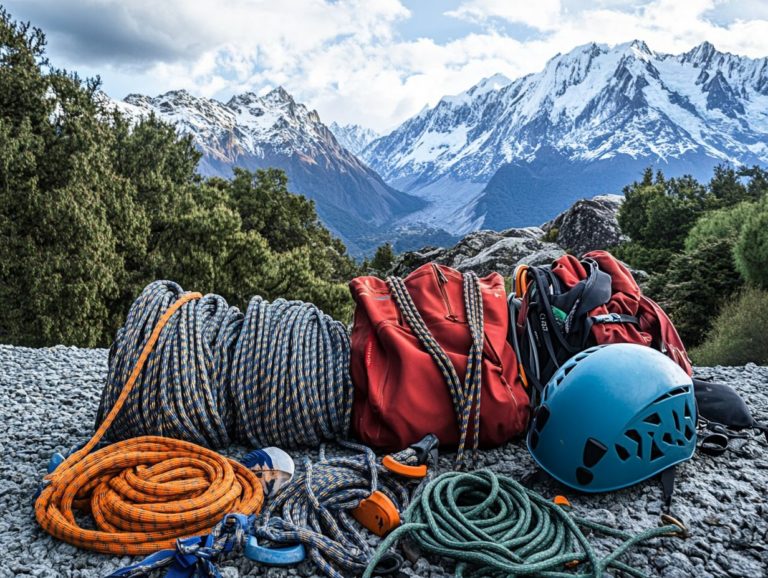The Role of Gear in Climbing Performance
Climbing is as much about your technique and strength as it is about the gear you choose.
Whether you re a seasoned pro or just starting out, selecting the right equipment can greatly impact your performance, safety, and overall enjoyment of the sport.
This article delves into the essentials of climbing gear, guiding you through what you need to kick off your journey and how your gear choices can shape your climbing style.
You ll also find crucial insights on maintenance and fit, ensuring you re fully prepared for your next adventure.
Get ready to elevate your climbing experience!
Contents
- Key Takeaways:
- Getting Started with Climbing Gear
- How Gear Affects Performance
- Choosing the Right Gear for Your Goals
- Gear Maintenance and Safety
- The Importance of Properly Fitting Gear
- Frequently Asked Questions
- What is the role of gear in climbing performance?
- What types of gear are commonly used in climbing?
- How does gear affect climbing performance?
- Why is it important to use proper gear in climbing?
- Can using outdated or faulty gear affect climbing performance?
- Are there any specific gear recommendations for different types of climbing?
Key Takeaways:
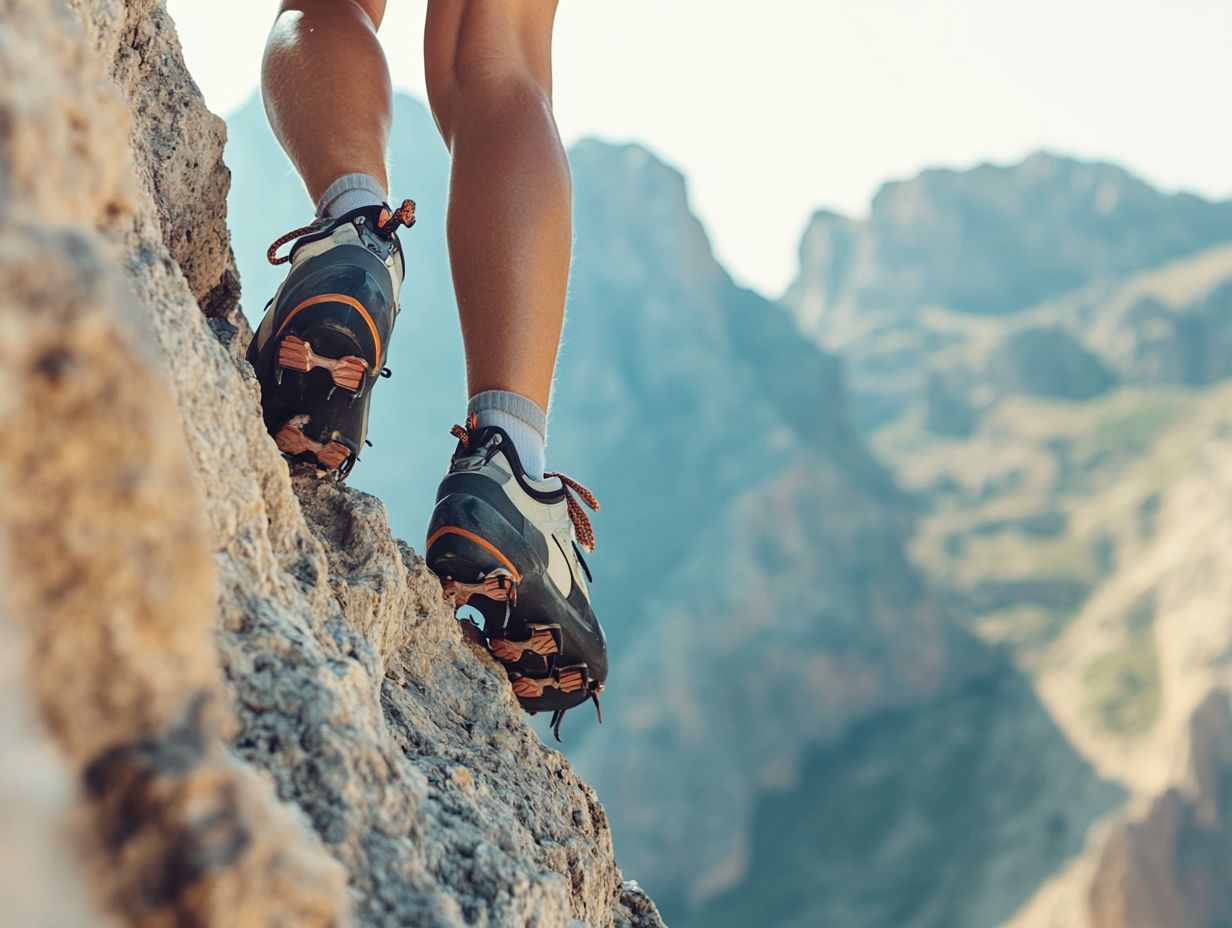
- Having the right gear is essential for successful and safe climbing experiences.
- The type and quality of gear can greatly impact your climbing performance, so consider weight, durability, and functionality before purchasing.
- Properly fitting gear is crucial for performance and safety take time to find what fits your body and style perfectly.
Getting Started with Climbing Gear
Grasping the fundamentals of climbing gear is vital for both novices and seasoned climbers. It not only enriches the overall climbing experience but also significantly boosts safety and performance.
Consider your climbing shoes: crafted for optimal grip, they are essential for every ascent. Then there are the belay devices, designed to ensure secure rope handling and playing a pivotal role in your climbing journey.
The climbing community champions high-quality gear, recognizing that it fosters a safe and enjoyable outdoor environment. With the right gear, you ll focus on mastering your climbing techniques and enjoying every moment of your adventure!
Essential Equipment for Climbing
Essential equipment for climbing encompasses a range of crucial items that elevate your safety, performance, and enjoyment during climbs think climbing harnesses, ropes, quickdraws, and helmets that adhere to safety standards for climbing equipment.
Each of these pieces serves unique yet interconnected purposes, making them vital for both novice and experienced climbers.
Take, for instance, the Black Diamond ATC Guide; this versatile belay device streamlines the belaying process for your partners during sport climbing. It also provides a friction mode for effortless descending.
On the other hand, the Black Diamond Hotwire quickdraw establishes a dependable link between your climbing rope and protection, which is crucial for trad climbing scenarios where quick attachment and release are paramount.
The Sterling Velocity XEROS stands out with its lightweight and durable design, ensuring you can ascend securely without the burden of excess weight, thus enhancing your overall maneuverability.
Each of these tools plays a significant role in bolstering safety and performance, firmly establishing their importance in your climbing gear collection.
How Gear Affects Performance
The gear you choose as a climber significantly influences your performance, affecting everything from the effectiveness of your climbing techniques to the overall safety of your experience.
Investing in quality climbing gear like specialized bouldering equipment and dynamic ropes enhances your grip, stability, and support.
This allows you to confidently tackle a range of challenges in both sport climbing and outdoor environments. Selecting the right equipment can profoundly impact your ability to execute intricate techniques and maintain safety throughout your ascent.
Key Factors to Consider
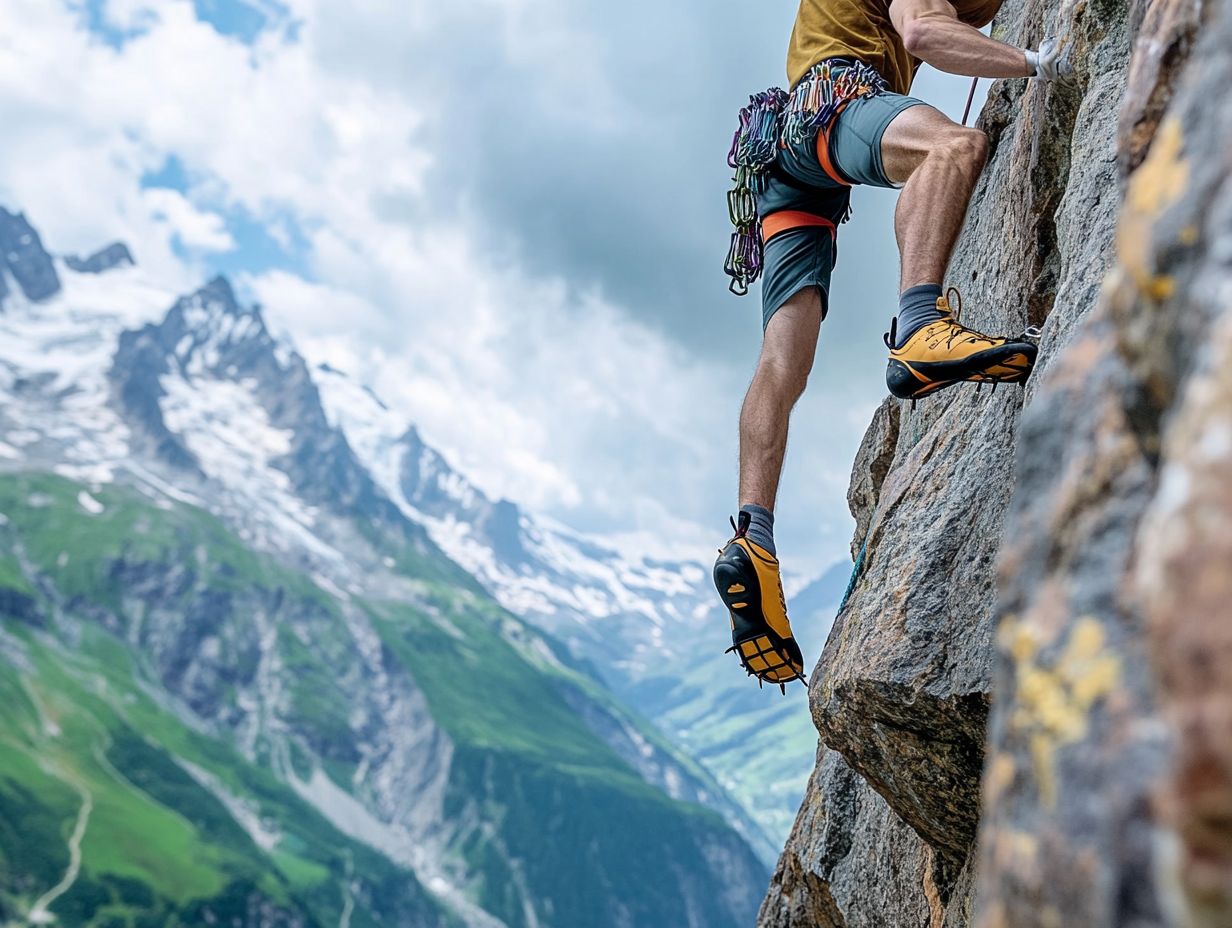
When selecting your climbing gear, it s essential to consider key factors such as safety, performance, and the specific techniques suited to your climbing style. These elements will greatly affect your overall experience on the rock.
Ensure your equipment is appropriate for outdoor climbing or indoor settings. Understanding the weight of your gear is crucial; opting for lighter equipment can significantly reduce fatigue during long climbs, allowing you to perform at your best without compromising safety.
Durability is another vital aspect. Gear made to handle tough conditions will offer reliable protection over time, minimizing the risk of unexpected equipment failure.
Fit is equally important; ill-fitting gear can impede your movement and cause discomfort, distracting you from the critical focus on safety. The climbing community places a strong emphasis on these aspects, often integrating them into training programs and gear reviews.
They advocate for thorough testing and personalized adjustments. This ensures you achieve optimal performance on even the most challenging routes.
Choosing the Right Gear for Your Goals
Selecting the right gear for your climbing ambitions is essential for enhancing your experience while also impacting your safety and performance on the rock face.
Whether your focus is on bouldering, sport climbing, or trad climbing, the equipment you choose should align seamlessly with your personal goals. It should also meet the specific demands of the climbing environment.
By actively engaging with the climbing community, you gain valuable insights into the best gear that complements your style and aspirations, including understanding the role of gear in climbing safety. This ensures you are thoroughly prepared for any challenges that lie ahead.
Matching Gear to Your Climbing Style
Matching your climbing gear to your specific climbing style is crucial for optimizing your performance, comfort, and safety during climbs, whether you re sport climbing or tackling trad routes. Each climbing style comes with its own unique requirements, which can greatly influence your overall climbing experience.
For instance, in sport climbing, the focus is on precise footwork, making specialized climbing shoes essential. These shoes are crafted with a snug fit and sticky rubber to enhance your grip on those vertical surfaces.
On the other hand, trad climbing calls for a variety of protection devices like cams and nuts. These are types of protection devices used in trad climbing to secure yourself to the rock and are vital for safeguarding against falls on unbolted routes.
The right harness, gear loops, and quickdraws play a significant role in defining the efficiency and safety of your climbing style. This ensures you re well-equipped to tackle your specific challenges.
Gear Maintenance and Safety
Maintaining your climbing gear is essential not just for prolonging its lifespan, but for ensuring your safety during outdoor adventures. Worn or damaged equipment can lead to serious accidents, so keeping your gear in prime condition is crucial.
Tips for Proper Care and Use
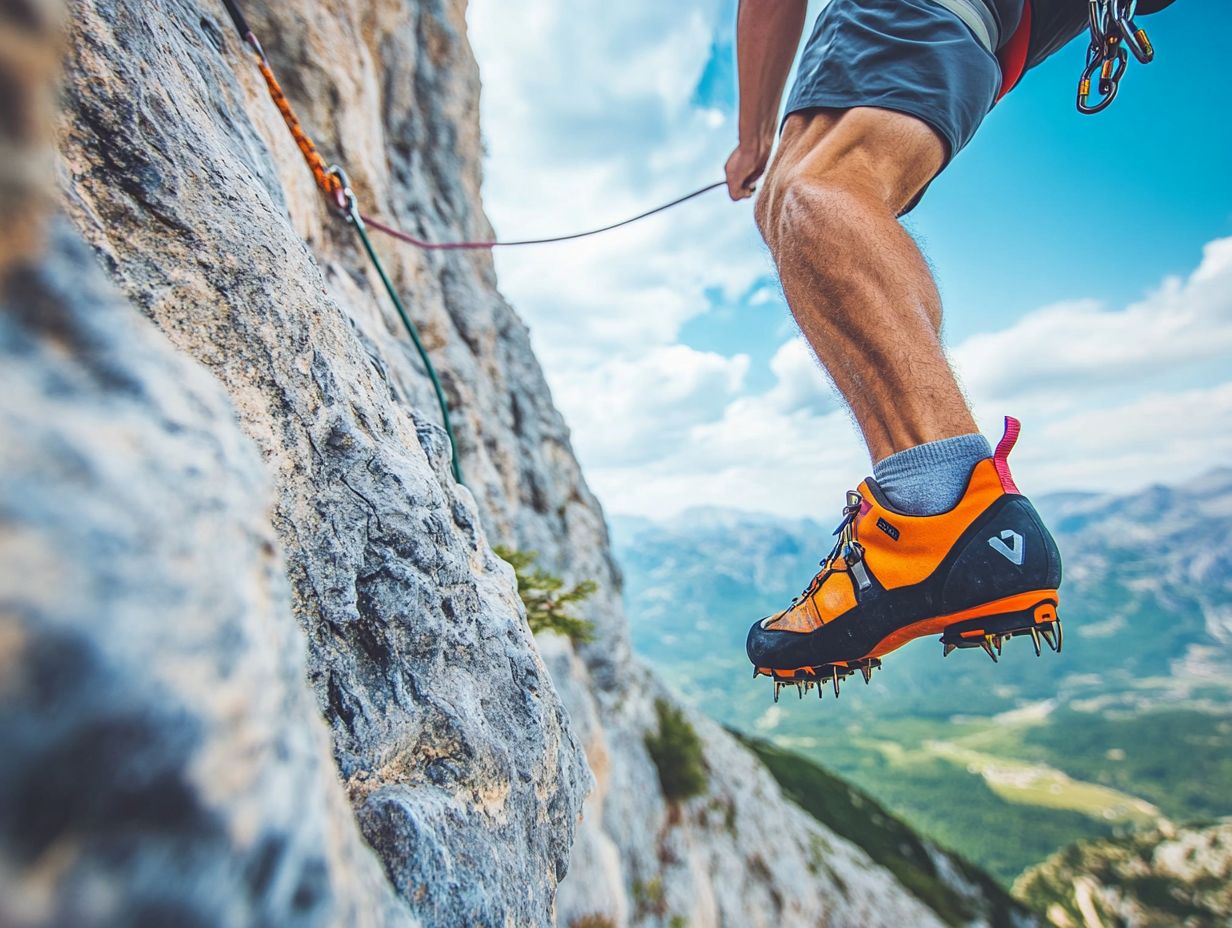
To ensure optimal performance and safety, follow a set of best practices for the proper care and use of essential climbing equipment, such as ropes and harnesses.
Regular maintenance not only extends the lifespan of your gear but significantly reduces the risk of accidents. For example, it’s crucial for you to clean your ropes after exposure to dirt, saltwater, or other contaminants. Neglecting this can compromise their structural integrity.
Likewise, inspecting your harness before each use for signs of wear like fraying or damaged buckles can prevent serious injuries during climbs. Properly storing your equipment in a cool, dry place away from direct sunlight helps protect it from deterioration.
By adopting these straightforward yet effective practices, you not only enhance your personal safety but also ensure that your climbing gear remains functional over the long haul. Act now to ensure your gear is safe!
The Importance of Properly Fitting Gear
Properly fitting gear is essential for climbers. It greatly influences performance and safety.
A well-fitted climbing harness ensures comfort and enhances safety! Snug climbing shoes improve grip and stability on challenging routes.
Climbers understand that fit is crucial. It enhances your overall experience and capability on the rock face, especially with equipment designed for comfort and efficiency.
How Fit Impacts Performance and Safety
The fit of your climbing gear is crucial for performance and safety. Poorly fitting gear can lead to discomfort or unsafe situations.
When your gear suits your body shape, it boosts confidence and improves maneuverability. Well-fitted climbing shoes enhance grip, making tricky footholds easier to tackle.
A harness that fits securely distributes weight evenly. This reduces pressure points that might distract you.
Poorly fitting shoes can cause blisters or cramps and hurt your climbing technique. A loose harness might not secure you properly, risking dangerous falls.
Ensuring an optimal fit elevates performance and is essential for climbing safety.
Frequently Asked Questions
What is the role of gear in climbing performance?
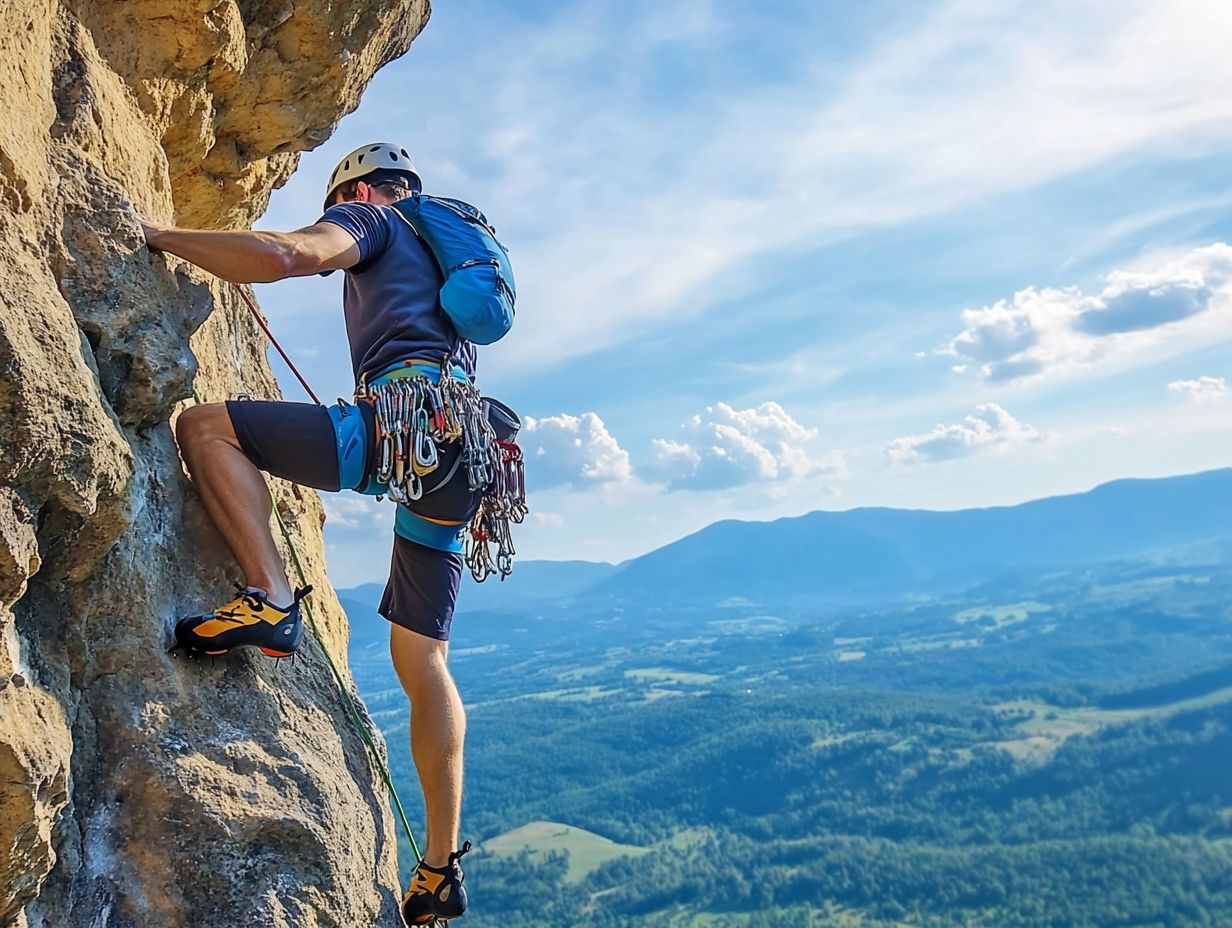
Gear provides necessary support and protection for climbers. The right equipment enhances your overall climbing experience!
What types of gear are commonly used in climbing?
Common climbing gear includes harnesses, ropes, carabiners, helmets, climbing shoes, and chalk bags. Other essentials are belay devices and quickdraws for sport climbing.
How does gear affect climbing performance?
The quality and functionality of gear greatly impact performance. Well-designed gear increases comfort, provides better grip, and allows for efficient movement.
Why is it important to use proper gear in climbing?
Proper gear prevents falls and protects against injuries. It helps climbers push their limits and tackle challenging routes with confidence!
Can using outdated or faulty gear affect climbing performance?
Yes! Outdated or faulty gear can hinder performance and lead to accidents. Make it a habit to regularly inspect and replace your gear!
Are there any specific gear recommendations for different types of climbing?
Yes, certain gear is better suited for specific types of climbing. For instance, bouldering requires thicker crash pads for safety.
Trad climbing needs a variety of climbing nuts and cams (devices used to protect against falls). It’s best to consult experienced climbers or professionals for tailored gear recommendations.

